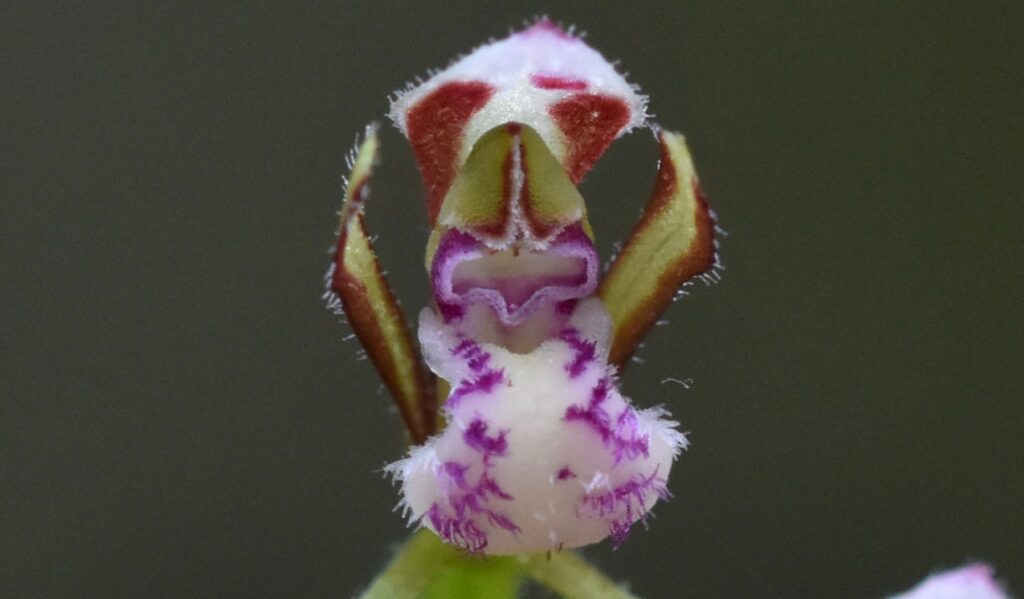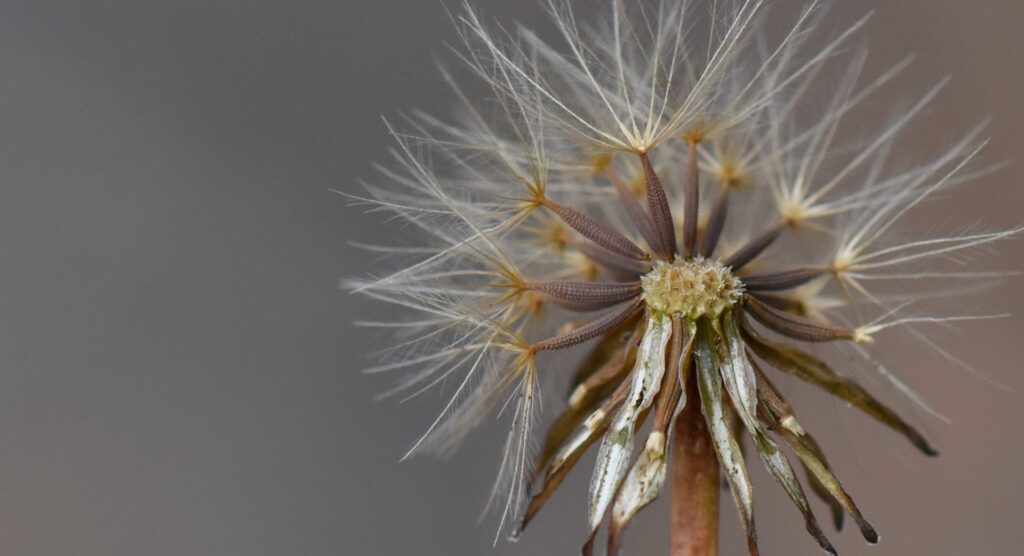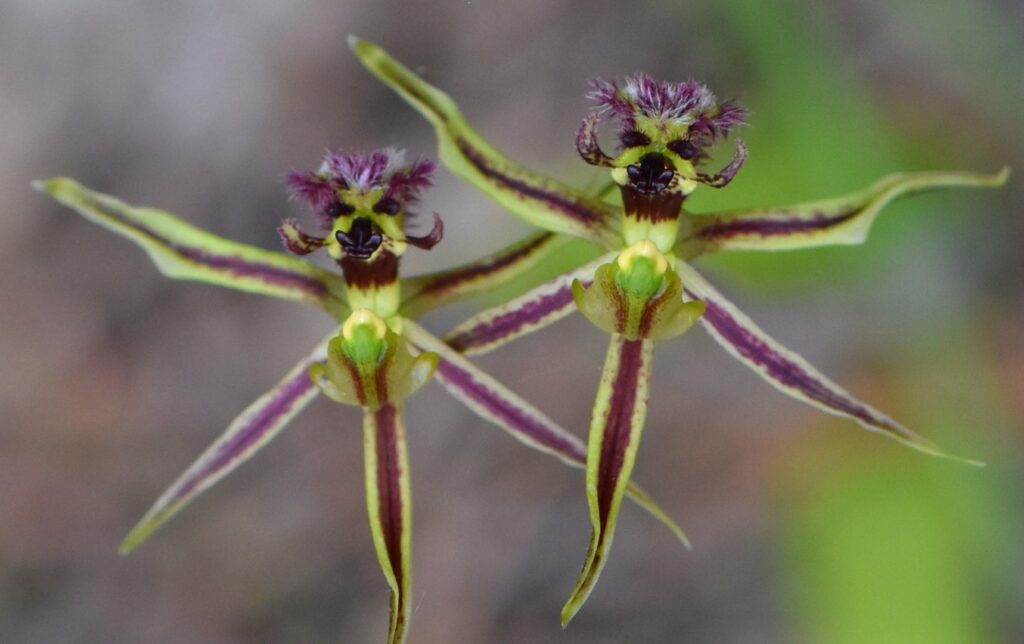Every now and then I come across an orchid that may not be the most beautiful, but it triggers something in me, something that once I see it, well it just won’t go away. Say hello to the common white bunny orchid, Eriochilus dilatatus subsp. multiflorus, or as I like to call it, the angry baby bird orchid.
wildflower trip
This is a post filled with pictures just messing around with some Drossera plants. It started as a wet day, but then I added to things by using a squirty bottle to add extra water to the plants and the results were really interesting. Little upside down images of sky, the red dirt road and bush in each water droplet.
There aren’t many orchids around the Ravensthorpe/Esperance area though there are a lot of Sun orchids. I spent 2 days in Helm’s arboretum and saw many thousands of blue sun orchids, now according to the orchid book there are only 9 different species of blue sun orchids in W.A. and perhaps only 2 species which could possibly be where I was, but the variety I found in both colour and form across the arboretum was stunning.
As the orchids have petered out traveling further east I’ve started looking at other plants and flowers. This image above may look like a boring little everlasting type flower but it’s when you look closer at numerous individual flowers and think about them, study them, that it starts to get interesting. This flower is like a little multi rocket launcher, rocket tubes opening up from the centre and the individual flowers begin to unfurl twisting their way up out of their launch tubes.
Starting to get towards the end of my orchid adventures for 2021. As I’ve moved further east the orchids have been thinning out and they are getting harder to find in these lower rainfall areas. I still have quite a few photos from the last week or two to post though here I’m going to concentrate on clowns, Caladenia roei.
The lazy spider orchid or Caladenia multiclavia, perhaps my favourite of all the orchids I’ve seen so far. I’m not sure why they call it lazy, I guess because of it’s reclined pose. I found lots of these in the area from Jerramungup through to Ravensthorpe, almost anywhere that there was some tree cover especially sheoaks was worth a look.
These king-in-a-carriage orchids reminded me of a pair of dancing Brolgas. Ok bird experts, perhaps not brolgas, though the photo certainly has an “Awwww” feel about it. This post is a pictorial of hammer and duck orchids, some were found in the Stirling Ranges while most came from a secret little location south of Mount Barker.










